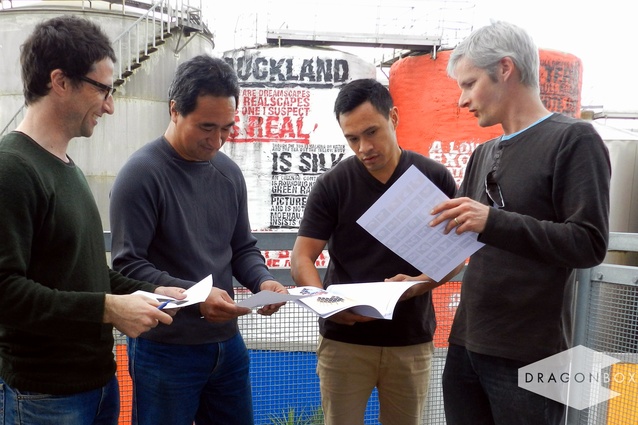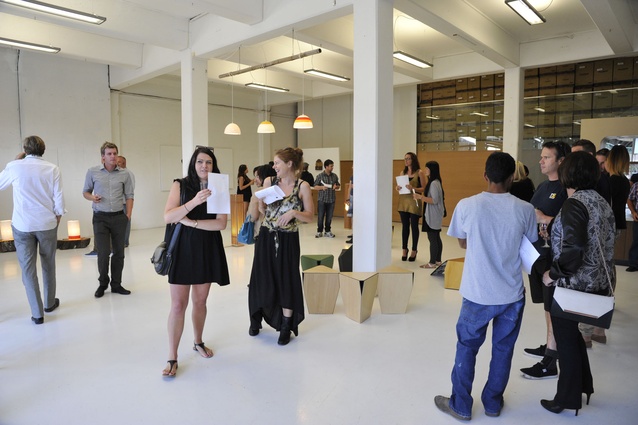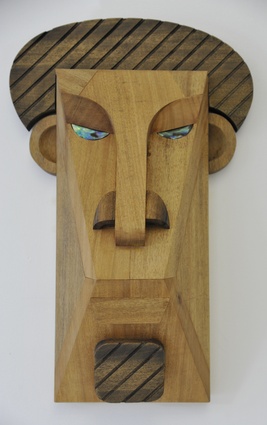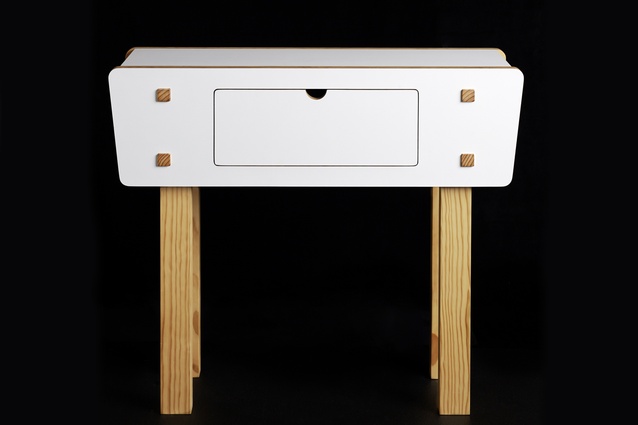Dragonbox Design Group
Four Kiwi designers have joined to discuss, advise, share and most importantly, encourage one another, in art and design.
Houses: How did Dragonbox came about?
Dragonbox Design Group: As designers and artisans, it’s easy to get trapped in isolation and mediocrity in our day-to-day lives. Many of us have to work separate part-time or full-time jobs, often stalling as we move sideways, striving to balance the notion of being creative while supporting ourselves, our lifestyles and our families. After much discussion and creative brainstorming, Edward Fuller and Kennedy Brown decided to formulate a plan and came up with Dragonbox; a group concept that started out simply to bring together designers and makers of the same ethos; a time and a place to discuss, advise, share and action three-dimensional design initiatives. We invited other creatives including Ron Crummer, Leon Kipa and several others, all of whom were in comparable positions and looking for similar opportunities.
We see the title ‘Dragonbox’ as a metaphor for imagination, creativity and the idea that the smallest, most radical little concepts should never be discounted but instead harnessed and embraced.
Houses: What is the goal of Dragonbox?
DDG: This initiative acts as a platform from which we support and motivate each other in creative and inspiring ways – a collective to generate action through interaction. The individual designers keep their own work and creative interests on track through a regular ‘show and tell’ meeting over a beer or coffee. We’ve found that working in collaboration is also a powerful motivator that encourages us to get things done in between meetings.
Houses: How does working together benefit you as individual designers?
DDG: Being committed and accountable to each other, as well as ourselves as individual designers, is always going to be a huge motivator for us. It allows us to set and achieve goals that may not have happened otherwise. The advantage of working together also gives us the opportunity to share ideas, network and offer and receive feedback and criticism – both good and bad. We hope the overall outcome is fresh, new work produced on a regular basis.
Houses: You’ve recently held your first collective exhibition, is this something you hope to do on an annual basis?
DDG: Definitely. Our intention is to have at least one group exhibition a year and we are currently planning additional collaborative projects outside of this. The format of these may go beyond just design as we are keen to involve the community at some level. The best way to do this is to book a place and a date, then tell everyone about it. Then start thinking about the next one.
Houses: What are the criteria for becoming a member?
DDG: Dragonbox is still evolving, as we learn to adopt and manage a more collaborative approach to creating and exhibiting new work. For now, we are comfortable with the current number of members and chemistry we have going as a group. However, we will continue to evolve in the future so we will see what happens.
Houses: Are there any plans to take the Dragonbox concept nationwide?
DDG: Outside interest has been warmly received and we are happy to talk with other designers. We recently organised an informal get-together with other like-minded designers in Auckland. This was a great way to put some names to faces, share knowledge and bring together a group of people from what is in reality quite a small industry in New Zealand. We think it’s important to keep the lines of communication open and active. We have plenty of ideas around larger collaborative exhibition initiatives, potential networking opportunities and even the idea of taking a Dragonbox exhibition to other centres. At Dragonbox we know that talk alone will not make this happen.
















